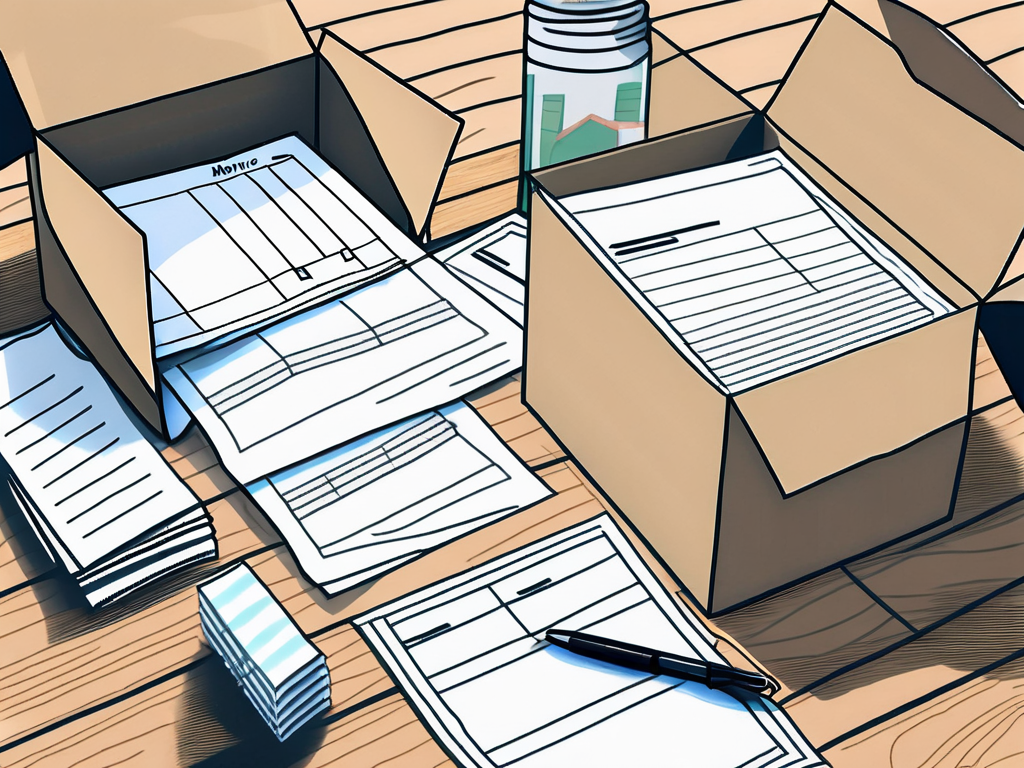When planning a move, whether it is across town or to another state, understanding the various documents involved is crucial. Among these, the Bill of Lading stands out as a key document. In this article, we will explore the importance of moving documents, delve into the specifics of the Bill of Lading, and outline additional essential forms required during the relocation process.
The Importance of Moving Documents
Moving documents play a significant role in any relocation process, serving as essential records that help facilitate the move. They can provide peace of mind, clarify responsibilities, and protect both the mover and the moving company.
Role of Moving Documents in Relocation
Each document involved in the moving process has a specific purpose. They help ensure that all parties involved understand their roles and responsibilities, providing a clear structure that enhances communication. For instance, an accurate and detailed Bill of Lading outlines what items are being transported and serves as a receipt of goods.
Additionally, moving documents also provide legal protection. In the event of damage or loss, these documents serve as evidence that can be used to settle disputes. Understanding these documents is invaluable for a seamless moving experience. Furthermore, documents such as inventory lists can help movers and clients keep track of all items being transported. These lists not only assist in verifying that everything arrives at the destination but also help in organizing the unpacking process, making it easier to settle into a new space without unnecessary stress.
Legal Implications of Moving Documents
Moving documents, particularly the Bill of Lading, have important legal implications. This document acts as a contract between the shipper and the mover, detailing the terms of service and the responsibilities of both parties. Validating these agreements helps to prevent misunderstandings and legal issues down the line.
Moreover, improper handling of moving documents can lead to liability issues. Should items get damaged or lost, the absence of essential documentation can complicate claims and compensation processes. In addition, other documents such as insurance certificates and service agreements can further safeguard the interests of both the mover and the client. These documents not only clarify coverage in case of unforeseen circumstances but also outline the procedures for filing claims, ensuring that both parties are aware of their rights and obligations. By meticulously managing these documents, individuals can navigate the complexities of relocation with greater confidence and security.
Comprehensive Guide to the Bill of Lading
The Bill of Lading is one of the most critical documents in the moving industry. Understanding its definition and components can help you navigate your moving experience with confidence.
Definition and Purpose of the Bill of Lading
The Bill of Lading is a legal document issued by a moving company that serves as a contract for the transportation of goods. It includes important details such as the type and condition of items being moved, the destination, and the terms of the service provided.
Essentially, it acts as both a receipt for the shipper and proof of the agreement between the moving company and the customer. This document also provides evidence of the items’ condition at the time of pickup, which can be crucial for claiming damages if they occur during transport. Furthermore, the Bill of Lading can also serve as a document of title, allowing the shipper to transfer ownership of the goods while they are in transit, which can be particularly important in commercial transactions.
Key Components of the Bill of Lading
A comprehensive Bill of Lading should include several key components:
- Shipper Information: Name and address of the person or organization shipping the goods.
- Carrier Information: Details about the moving company responsible for transporting the items.
- Destination Details: The address where the items are being delivered.
- Itemized List: A detailed list of items being moved, including descriptions and conditions.
- Signature: The signature of the shipper and the moving company official, confirming the agreement.
In addition to these components, the Bill of Lading may also contain specific instructions regarding handling and delivery, such as whether items require special care or if there are any time-sensitive considerations. This can be especially important for fragile items or perishable goods, where delays could result in significant loss. Moreover, the Bill of Lading often includes terms and conditions that outline the responsibilities of both parties, including liability limits and procedures for filing claims in the event of loss or damage, ensuring that both the shipper and the carrier have a clear understanding of their rights and obligations throughout the moving process.
Other Essential Moving Documents
Beyond the Bill of Lading, there are other documents that can facilitate a smoother moving experience. Each plays its role, ensuring that both the mover and the moving company are on the same page.

Inventory List: What It Is and Why It Matters
An inventory list is an itemized record of all items being moved. This crucial document not only assists the moving company in the loading and unloading process but also provides the shipper with a tracking system for their belongings.
In case of any discrepancies or missing items, this list becomes a vital point of reference. It is important to verify the inventory list carefully and to ensure that it accurately reflects what is being transported.
High-Value Inventory Form: Protecting Your Valuables
For those moving valuable items, a High-Value Inventory Form is essential. This specific document serves to list all items of high monetary worth, along with their condition and estimated value.
Using this form can expedite the claims process if any high-value items are lost or damaged during transport. It is crucial to inform the moving company about any high-value items beforehand to ensure they take appropriate measures for their protection.
Reading and Understanding Your Moving Documents
Understanding moving documents is not merely a matter of reading through pages. It is about comprehending the terms, implications, and ensuring all details are accurate to avoid complications.
Deciphering the Jargon in Moving Documents
Moving documents often contain industry jargon that may be confusing. Terms such as “accessorial charges” or “declared value” can be unclear for those not familiar with moving terminology. It is essential to take the time to understand these terms.
If you have questions or if there are terms that you don’t comprehend, don’t hesitate to ask the moving company for clarification. Having a clear and firm understanding of all language in your documents will help ensure a smoother process.
Ensuring Accuracy in Your Moving Documents
The accuracy of your moving documents directly reflects the professionalism of both the shipper and the moving company. Double-check all figures and information presented to you.
Inaccurate documents can lead to delays, disputes, or even additional costs during the moving process. Therefore, before signing any documents, review them carefully, making sure everything matches your expectations and agreements made during the initial conversations.
The Role of Moving Companies in Handling Documents
Moving companies not only facilitate the physical act of moving but also handle an array of documentation that ensures the process runs smoothly.
Responsibilities of Moving Companies
Moving companies have a duty to provide accurate documentation and ensure that shippers understand what they are signing. They are responsible for preparing the Bill of Lading, inventory lists, and any other required documentation.
Moreover, it is their job to maintain transparency throughout the process. This includes openly communicating any potential changes in fees or services that may arise during the actual move.
What to Expect from Your Moving Company
When hiring a moving company, you should expect them to guide you through the documentation process. They should provide you with an explanation of each document and its significance in the moving process.
A reputable company will also ensure that all paperwork is completed accurately and in a timely manner, helping you feel secure about your upcoming move. Ultimately, your peace of mind is their priority.
















